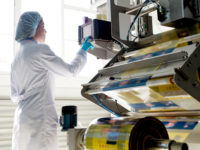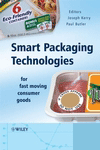Automation
Packaging Machine Safety
Machine safety is about productivity, not just compliance.








Typically, we think of packaging machine safety in terms of hard wiring, e-stops, guarding, lock out/tag out and regulatory compliance. Those are important considerations, of course, but today’s networked safety technologies can achieve substantial increases in productivity. Instead of shutting down a machine, networked safety puts the machine into a safe operating mode, not unlike collaborative robots.
Networked safety is widely applied by European packaging machine builders, and North American packaging OEMs are discovering the benefits, which include a streamlined control architecture and improved diagnostics, as well as fewer stoppages.
Here’s how it works.
Networked Safety
Networked safety means no need for long runs of hard wiring. Instead of hard wiring, safety is communicated over the same deterministic network that controls the machinery or the entire packaging line. Rather than a safety circuit, safety functions are performed by a variety of intelligent controllers depending on the sophistication of the machine. For a simple machine, it could be a safe I/O slice. It also could be a PLC that combines control and safety PLC functionality, or a separate safety PLC.
Diagnostic Information: One important aspect of networked safety is diagnostic information. Hard wiring and safety circuits can’t give you important information that can help you prevent or resolve problems. That takes intelligent devices and network communications to log events as well as alert operators and managers.
In basic terms, the safety function uses a separate and different type of processor to compare what should be happening in the machine to what is actually happening. This provides redundancy and helps prevent the chance of failure if the same processor or same kind of processor is used in the safety PLC.
Safe Motion: And it’s not just about logic. Safe motion is one of the most revolutionary aspects of networked safety. Safe motion goes far beyond the familiar safe torque off, which keeps the power on but still stops the drive(s) and therefore, the machine. There are functions for safe limited torque, force, speed, direction and more. Safe motion applies to robotics and intelligent track-based systems in addition to conventional packaging and processing equipment.
The idea, again, just like with cobots, is that instead of shutting down, the machinery goes into a mode that doesn’t go fast enough or hard enough to injure someone. A good example is safe direction for a set of nip rolls. In safe mode, the nip rolls would not be able to run in a direction that would draw a necktie, sleeve or hand into the mechanism.
Networked safety is not an alternative to risk assessment, safety conscious operation and proper maintenance of safety appliances, such as guarding and interlocks, training and documentation. Nor is it an alternative to compliance to ANSI/PMMI B155, EN/ISO 13849-1, EN/IEC 62061 and related standards, like the ISO and ANSI/RIA robotic safety standards. Networked safety is a great advance in terms of measurable Overall Equipment Effectiveness and the mechanical wear and tear caused by abrupt emergency stops and restarts.
Response Rate: An important design consideration is the network’s response rate. The faster the network response, the shorter the distance between the moving parts and human presence. That translates to a smaller footprint and greater access to perform necessary tasks, such as operation, service and material replenishment.
Fewer stoppages also mean less reason to open the control cabinet, which, in turn, means fewer instances requiring lock out/tag out or risking arc flash.
It is important to note that not all automation platforms support networked safety or all aspects of safe motion. Not all cobots implement networked safety; some use sensors and actuators to limit motion or stop the robot. It is incumbent on the machine designer and specifier to evaluate the technologies on the market and determine what is best for their needs. For example, different Safety Integrity Levels (SIL) and Performance Levels (PL) described in machine safety standards may be appropriate depending on the application.
It’s also important for companies working internationally to apply the same level of safety in different countries. If a higher level of safety is applied in another country, it can lead to a legal issue in the country where the equipment is not held to the same level of safety.
PMMI, the Association for Packaging and Processing Technologies, recommends that machine builders take photos of machinery with all safety devices in place before shipping to the customer as documentation.
Hard-wired safety is ingrained in the North American safety culture, but just as intelligent devices such as light curtains can actually be more effective than physical guarding (and more difficult to bypass or otherwise defeat), it’s time to embrace networked safety technology.
Looking for a reprint of this article?
From high-res PDFs to custom plaques, order your copy today!













